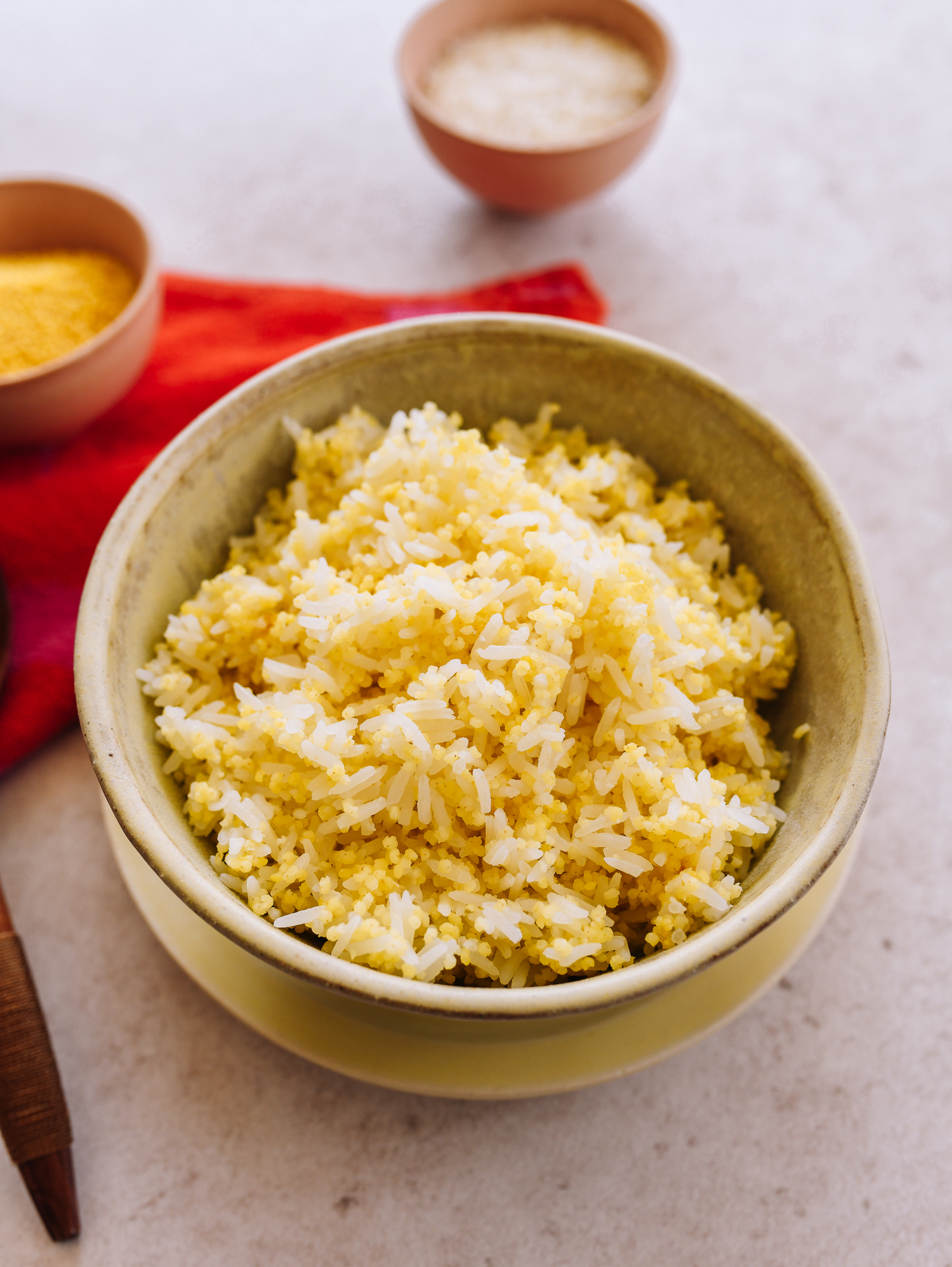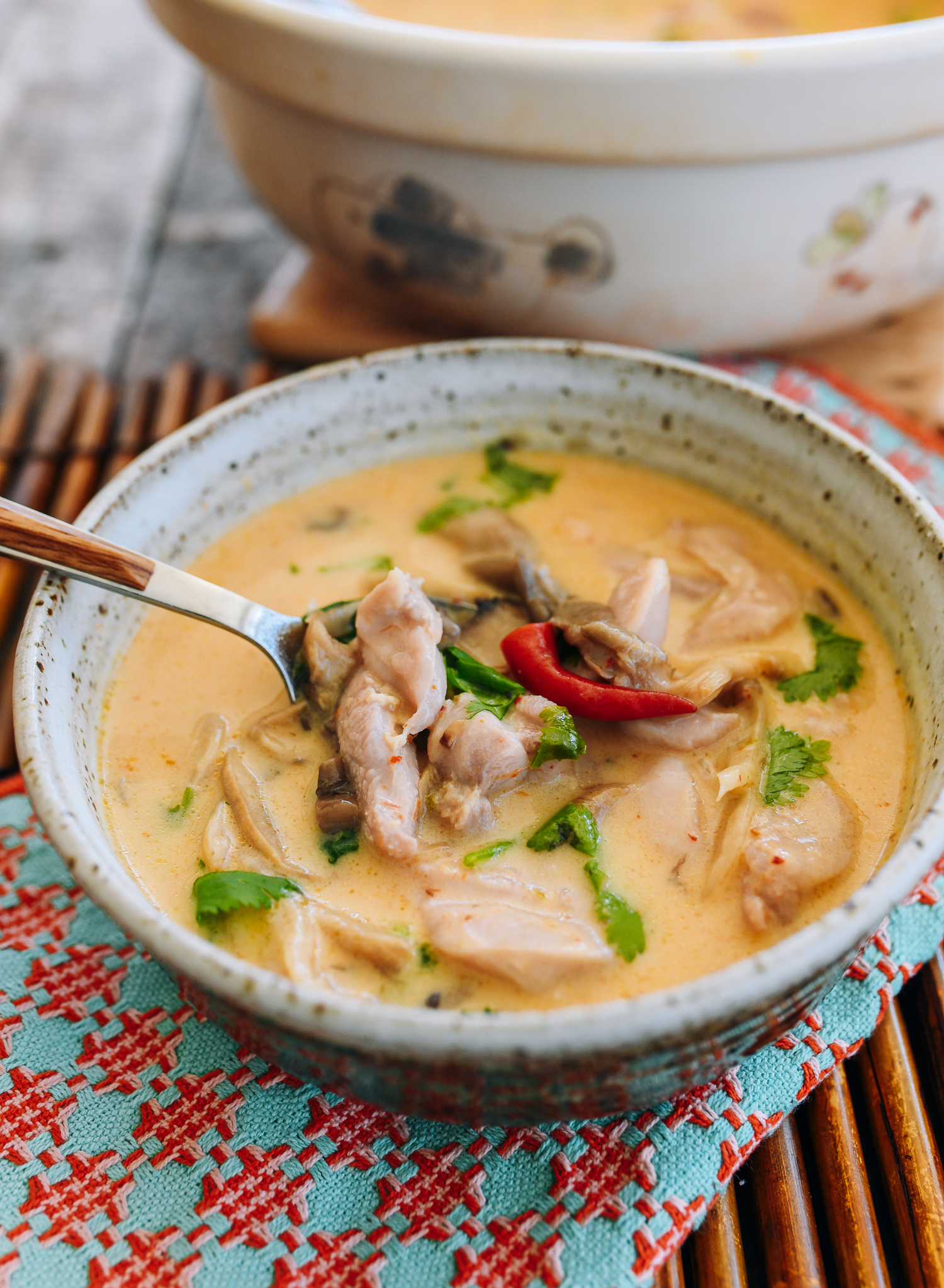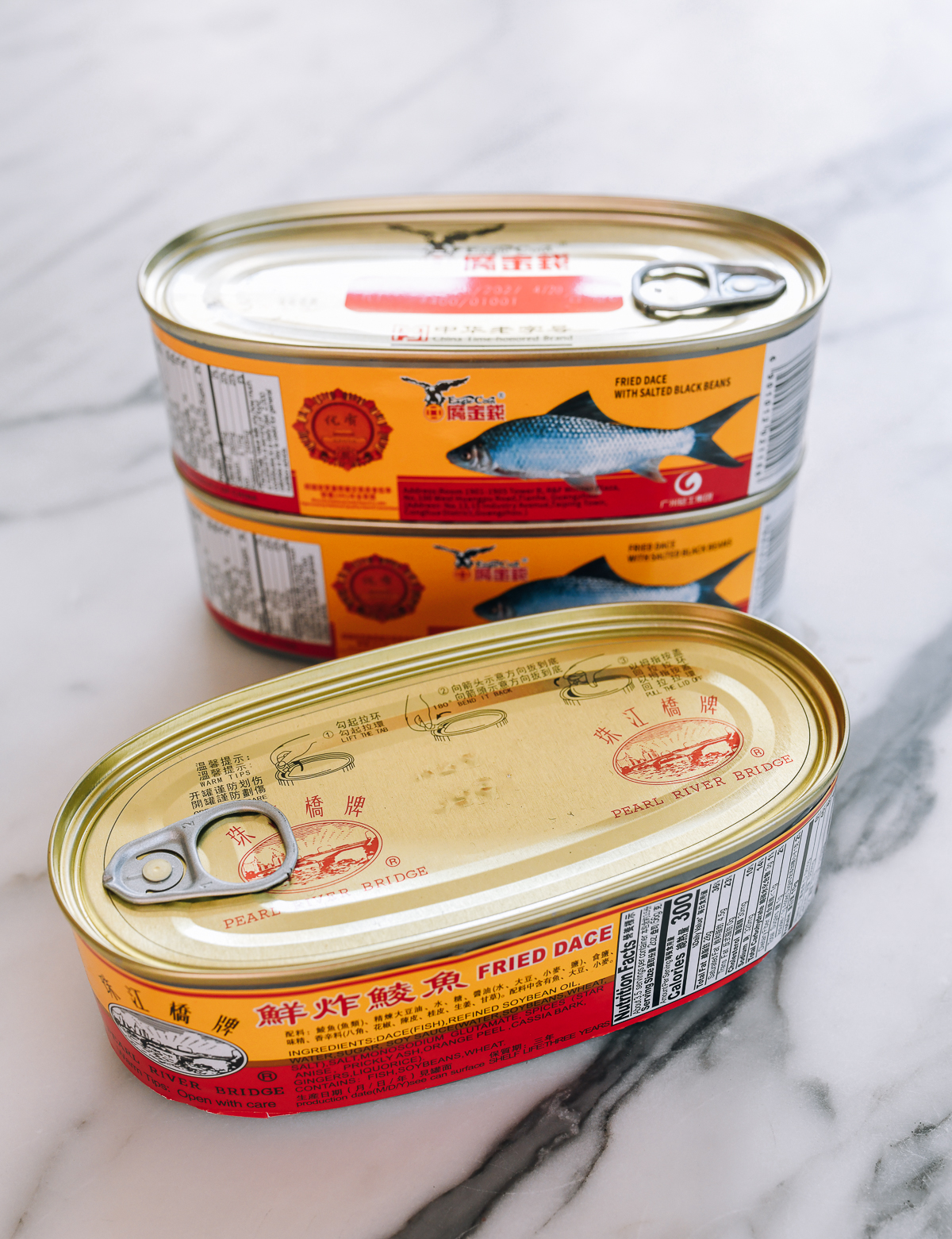Today, we’re preparing millet rice! Millet serves as an excellent alternative to white rice, and this recipe combines aromatic jasmine rice with nutritious millet, offering an easy and versatile way to incorporate more whole grains into your meals.
Millet: A Nutrient-Rich Alternative to White Rice
In our quest for alternatives to white rice, we have become increasingly health-conscious. As we age, the desire to include more whole grains in our diets has grown, whether it’s quinoa for added fiber and protein, black rice for its antioxidants, or now millet!
Millet is gluten-free, high in fiber, and has a lower glycemic index compared to rice, which means it won’t spike your blood sugar as much. Additionally, it contains more protein than rice and is packed with antioxidants, vitamins, and minerals like niacin, folate, iron, and magnesium.
A Little-Known Chinese Staple
Our journey with millet began years ago when some of us temporarily relocated to China, where it was readily available in grocery stores.
For a delicious twist, try my mom’s millet porridge recipe (xiǎomǐ zhōu, 小米粥), which is a wonderfully satisfying substitute for rice pao fan. It’s affordable, nutritious, and its high fiber content helps you feel full faster and longer!
While it’s now easier to find a variety of healthy grains in stores, it’s amusing that our most extensive multigrain experimentation occurred in China!
However, many Chinese people have a strong attachment to their white rice, which is why this hybrid millet rice recipe is perfect. Combining ½ cup of millet with 1 cup of jasmine rice results in a fluffy and balanced dish that you can feel good about!
It’s important to note that there are several types of millet, including pearl millet, foxtail millet, and finger millet. For this recipe, we are using foxtail millet, a small, round yellow seed commonly found in Chinese cuisine.

Millet Rice Recipe Instructions
To prepare approximately 4 ½ cups of cooked millet rice, you will need:
- ½ cup millet
- 1 cup jasmine rice
- 1½ cups water
Note that these measurements are based on U.S. standard cups! A rice cooker cup is equivalent to ¾ cup in the U.S. (more details can be found in our video), so be sure to use your regular measuring cups.
Add the grains to your rice cooker pot and cover them with water.
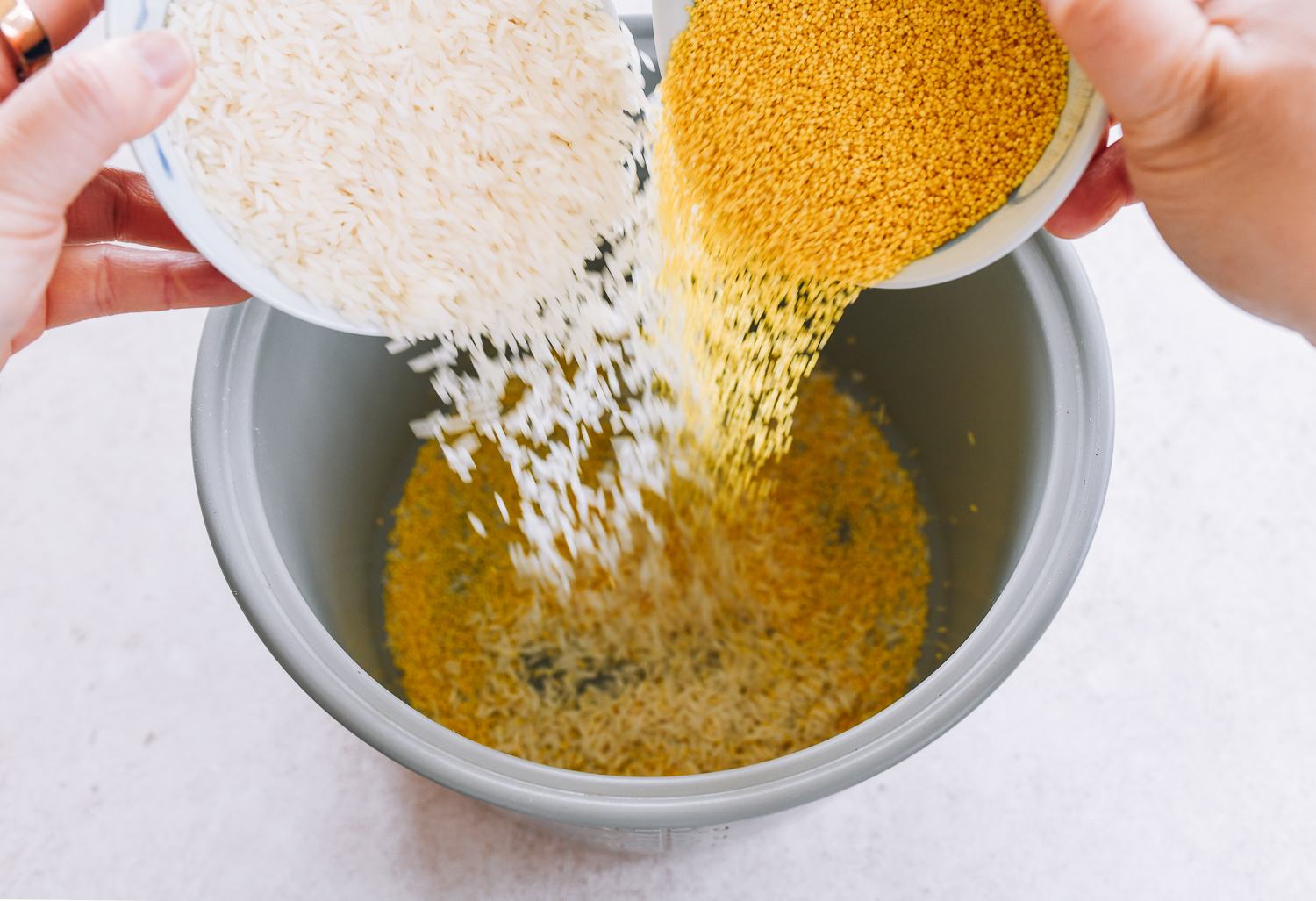
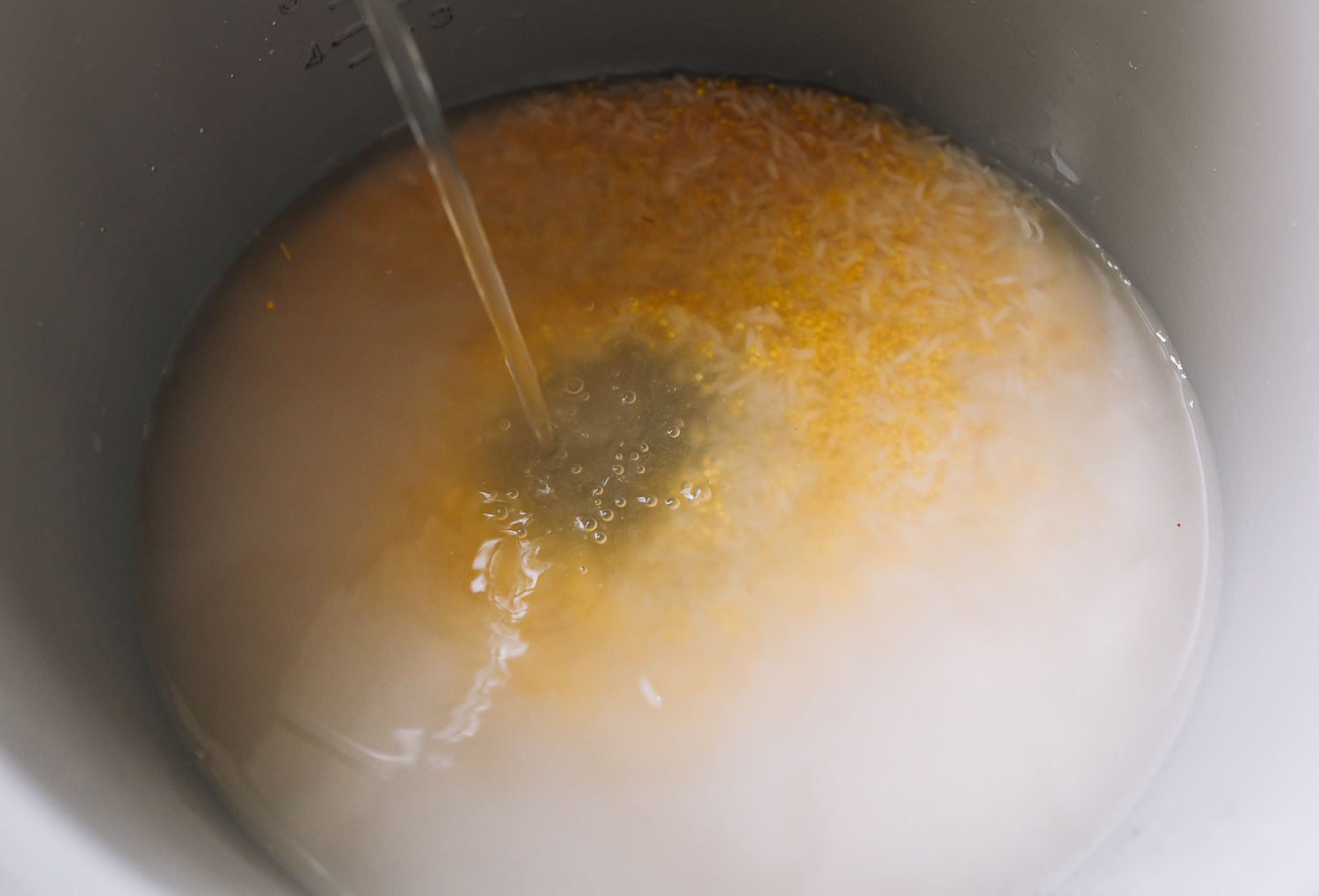
Agitate the grains with your hands, then pour off the excess water—try to remove as much as possible without losing any grains. A little residual water is acceptable.
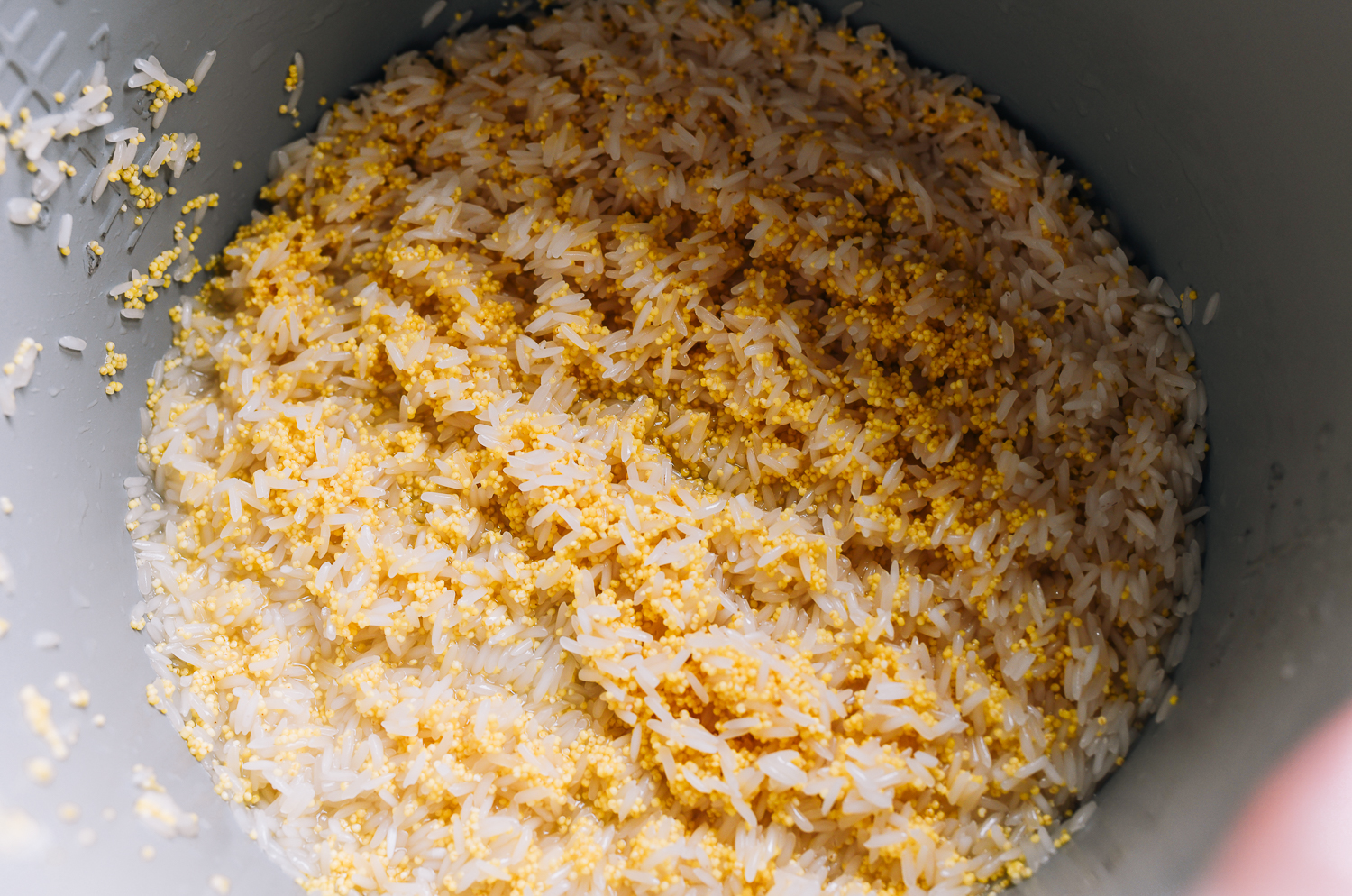
Add 1½ cups of cooking water, place the pot in the rice cooker, and press the button.
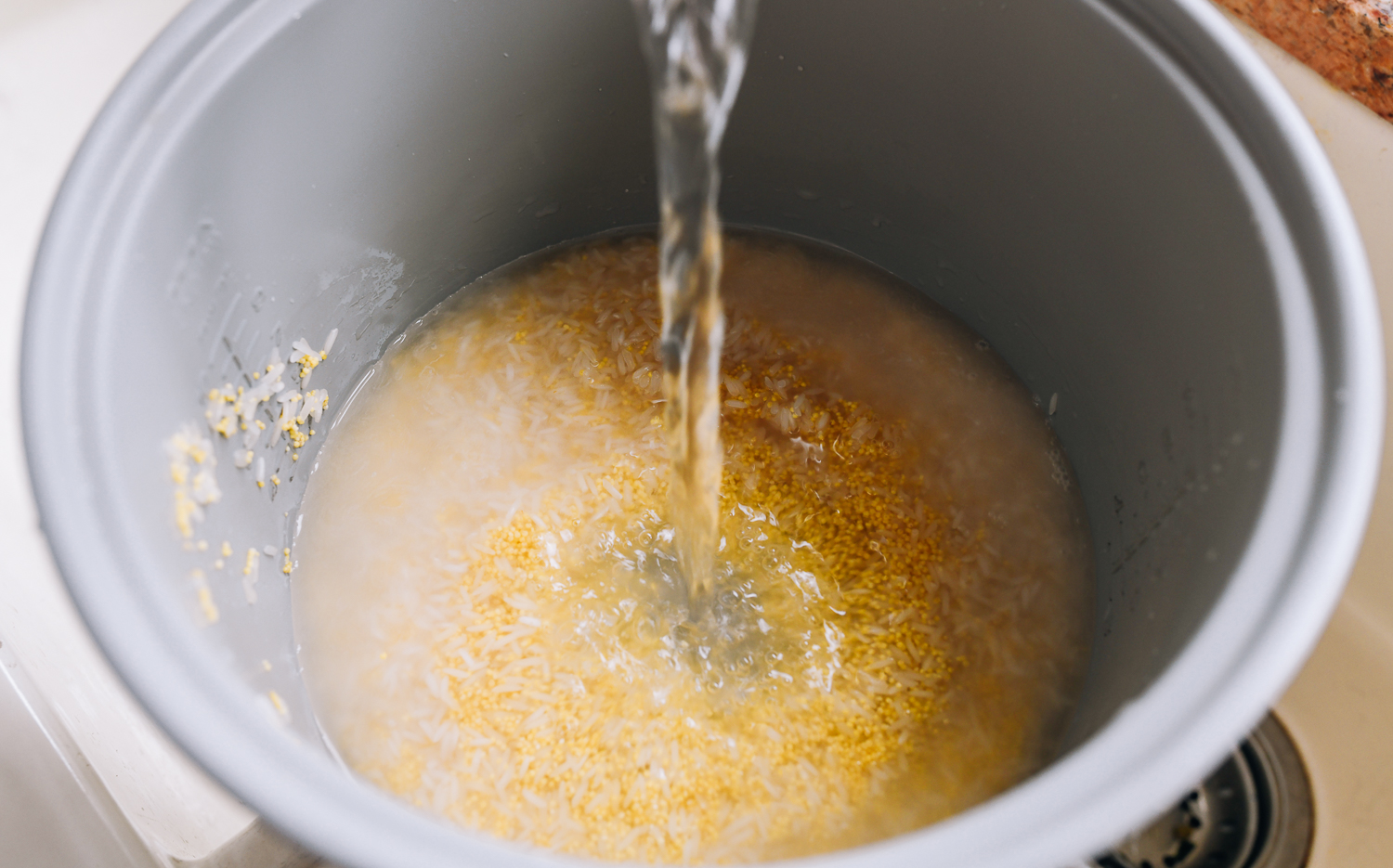
Once cooked, let the millet rice steam on the “keep warm” setting for an additional 10-15 minutes. While this step is not mandatory if you’re short on time, it does enhance the fluffiness of the rice. Before serving, fluff the millet rice with a rice paddle, and it’s ready to enjoy!
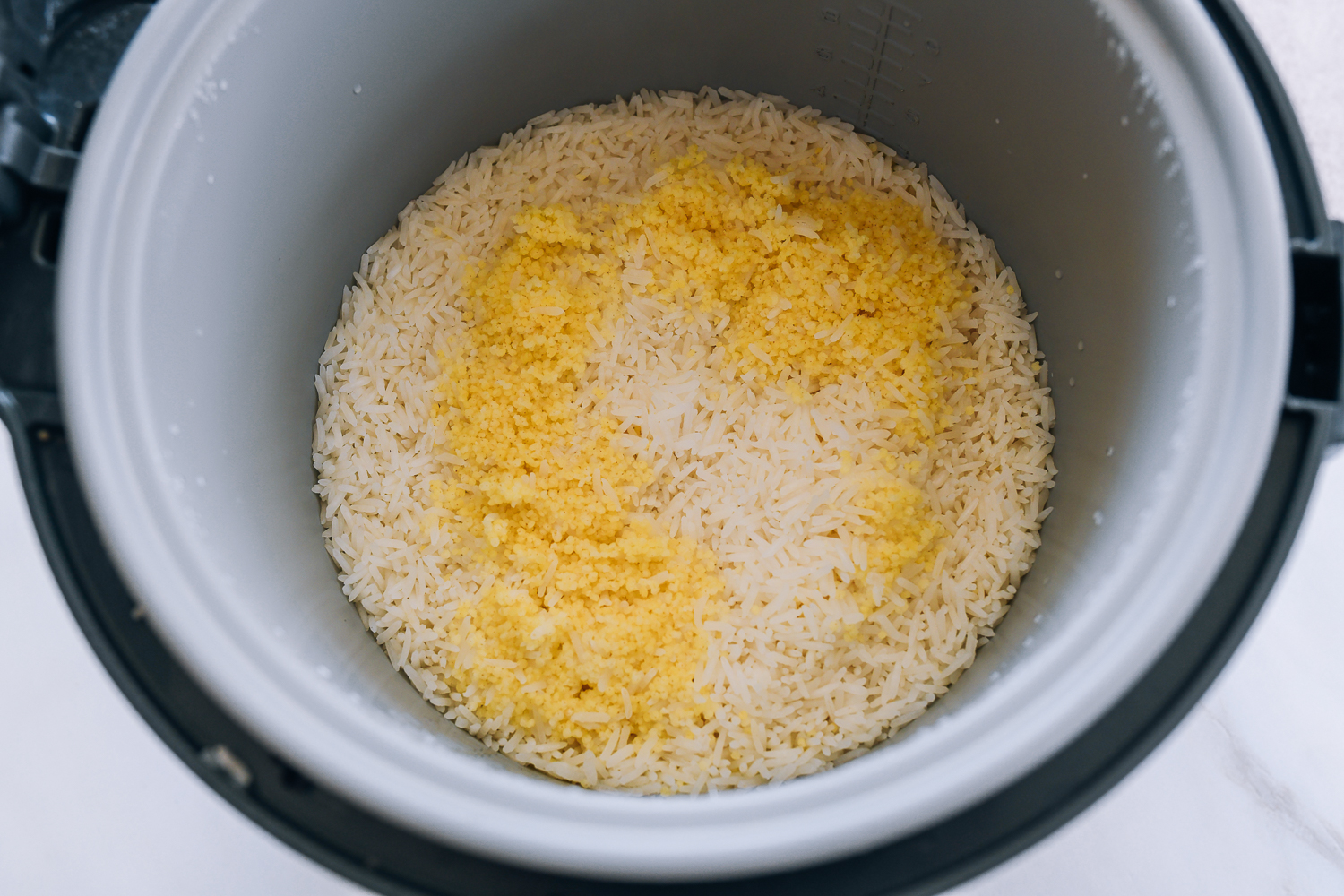

Note: If you don’t have a rice cooker, soak the rice and millet in a medium-sized pot (we use a 3-quart pot). Cover the grains with 1 inch of water and soak for 20 minutes. Agitate the grains to release excess starch, then drain the water. If a little water remains in the pot, that’s fine. Add 1¾ cups of water, cover, bring to a low boil, and then reduce to the lowest setting. Cook for 15-20 minutes. Turn off the heat and fluff the millet rice with a fork or rice paddle.


